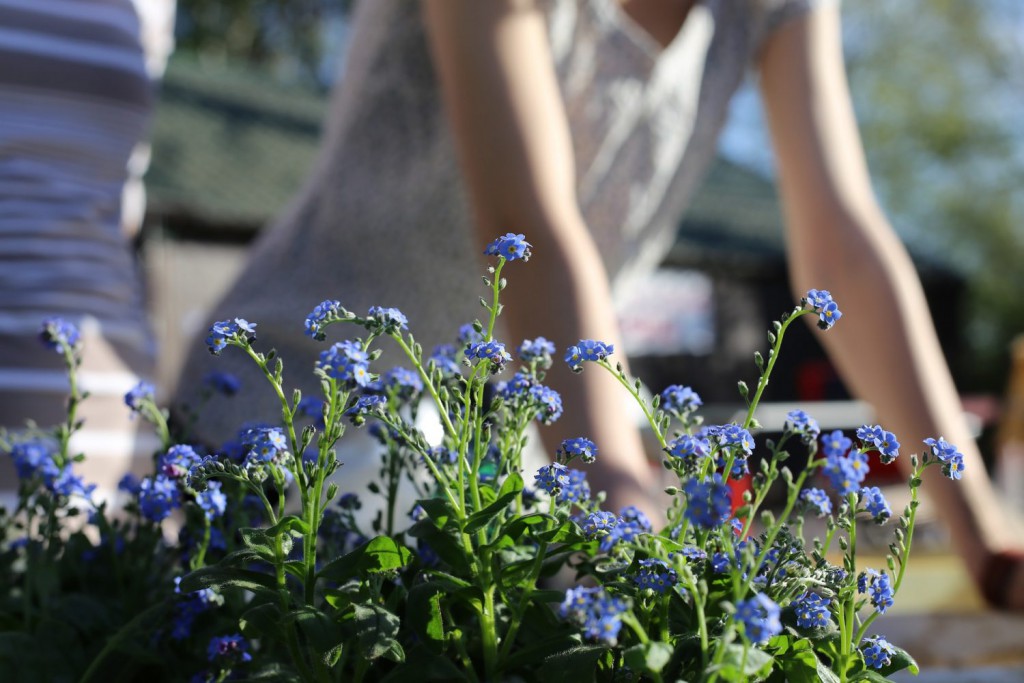Using Diatomaceous Earth
The question of how to spread diatomaceous earth in your yard and garden for pest control can be a tricky! But we’re here to help – here are some suggested application instructions and rates.
When using diatomaceous earth as a pesticide, it is important to read the label before applying. Be sure that the product’s label includes a pest control number in order to verify that it has been registered with the appropriate governing body as a pesticide and that it will be effective for your intended purpose.
Where to Spread DE
Registered diatomaceous earth insecticide products, such as Last Crawl, can be spread in your yard and garden to help kill crawling insects such as ants, spiders and fleas.
For best results, clear away all debris and spread a light coat of Last Crawl wherever pests are found or may hide, including ant trails, door frames, entrance ways, foundations, patios, window frames, window sills, shrubs, flower beds, garbage cans, recycling bins, etc. Apply the diatomaceous earth at a rate of 70 g per 10 m2, paying careful attention to cracks, crevices, and other areas where the insects may hide or crawl. If possible, dust the insects directly.
Last Crawl diatomaceous earth insecticides can be mixed with an attractant in order to attract and encourage insects to ingest it. This will result in a lacerated digestive tract, causing further dehydration. To add an attractant, mix in cereal or nut powder, icing sugar, powdered soup mix, powdered yeast, or any other dry, powdered, food grade attractants with the diatomaceous earth. The attractant can be mixed in at a rate of 25% to 50% in volume. If the DE is applied with an attractant added, the application rate can be reduced to 60 g per 10 m2.
Last Crawl can also be applied as a wet powder. For wet powder application, mix 6 tablespoons of Last Crawl per 1 quart of water (or 90 grams of Last Crawl per 1 L of water). Mix well before applying and continue mixing during application, as some settling may occur. Use a bottle with spray settings and apply the mixture to the point of wetness around foundations, shrubs, flower beds, gardens, etc. One quart of mixture will treat 108 sq. ft. (or 1 L of mixture will treat 10 m2).
How to Spread Diatomaceous Earth
Most DE insecticides come packaged for easy application. For example, Last Crawl is available in a jug with shaker lid so the product can be easily spread or, for harder to reach places, a puffer bottle is also available. A fine dusting can also be applied using a hand or powder duster, bulbous duster, flour sifter or other suitable equipment. For small areas, salt and pepper shakers work well as an application tool. An old tube sock or nylon pantyhose can also be filled with Last Crawl and used to sprinkle and spread the diatomaceous earth around your yard and garden.
Just be sure to apply the diatomaceous earth lightly and uniformly – remember, a little goes a long way! For best results, use the DE in areas where the dust will not be affected by heavy rains or high winds. Leave the treated area undisturbed for two to three days to eliminate existing and reoccurring infestations.
Please note: When applying diatomaceous earth, avoid inhaling the dust and use adequate ventilation. As with any type of dust, it is not good to inhale too much DE powder. Avoid application of DE when winds are gusty. It is not advisable to use power dusters, power sprayers, air blowers or dust blowers when spreading diatomaceous earth. As mentioned above, please be sure to read all application instructions on the product label before applying.



